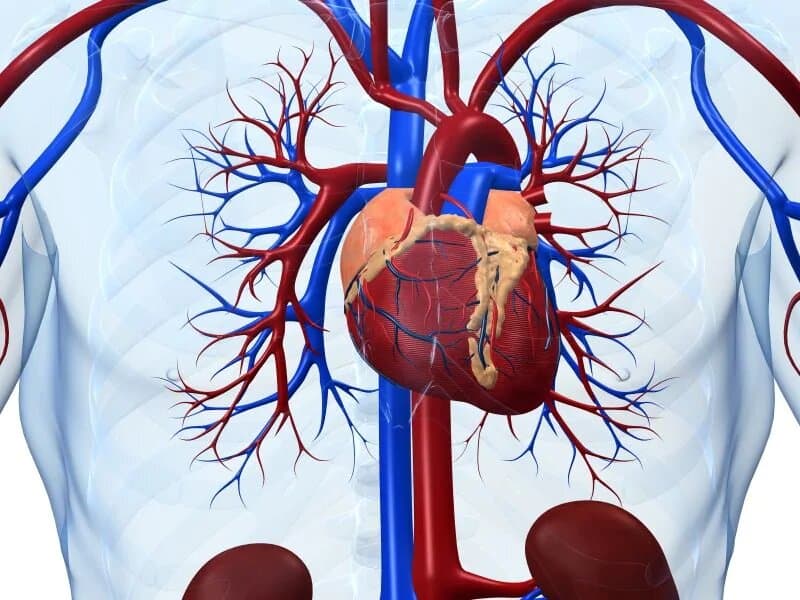Researchers Are On A Mission To Know How Fibrosis Affects The Heart’s Natural Pacemaker
Nikki Attkisson | Last Updated : May 3, 2021Researchers are on duty about how to examine the fibrosis effect from the heart’s natural pacemaker. At Ohio State University of Wexner Medical Center, they are into the research of new insights about how to do hearts sinoatrial node work on a severe heart failure electrical signals and body’s natural pacemaker effects.
Researchers Are On A Mission To Know How Fibrosis Affects The Heart’s Natural Pacemaker
The Body’s natural pacemaker is a sinus node which is an important element in the cardiac conduction system. In our heart in the upper right portion, a cluster of cells functions is known as the “Body’s natural pacemaker”. They produce electrical impulses throughout the body. These electrical impulses help in the pumping of blood.

Sinus nodes fibroblasts generate the connective tissue. These connective tissues help to heal the wound and build collagen. The statement was given by scientists and researchers at the Ohio State University Dorothy, M. Davis lung and heart research institute, and the bob center for heart failure and arrhythmia.
By utilizing explanted hearts of humans, scientists observed that sinus node fibroblasts in unhealthy hearts have vulnerable production of fibrosis which is a very thick variant compared to healthy hearts. This effect diminishes the carriage of electrical signals to the atria.
These all-effected hearts and diseased hearts are examined in the research and had created a good range of databases to know the genes and proteins that lack in the heart. After the examination of all databases, researchers found that sinus node (SAN) of non-failing and failing hearts containing myofibroblasts and certain proteins only in the unhealthy hearts. This research has been published in the American Hearts Association publications.
It provides a wide range of work for future establishments and studies to explore the characteristics of certain fibrosis (SAN) in heart arrhythmia and its rhythm regulations. The desire back of these findings is to develop many new systematic treatments for heart failure, as this has been affected by 6.2 million grown-ups in theUS.
The examination of sinus node fibroblasts (SAN) in humans’, is the first study that influences both quantitative and qualitative terms. These characteristics had revealed many secret terms which are very unique to enable the elevated levels of the connective tissues. In humans, the sinus node development for healthy adults has 45 percent of opaque connective tissue. If this percentage rise-up to 50 percent more we can see the start of sinus node (SAN) dysfunction.
Professor Vadim Fedorov said that a “pacemaker is needed to implant and restore the heart’s rhythm regularly” he is the professor of cell biology and physiology at the Ohio State University College of medicine. He is also a senior author of this study.
Future findings and studies play a major role to find out the prevention for SAN dysfunction as these are set on for increasing the recognition of proteins in heart failure and to decrease the risks of pacemakers by reducing its needs. Fibroblasts play a major role in SAN activities.
This disease is caused by having an excess of fibrosis around the cells, this disrupts the signals to the heart and slows down our heartbeat. This can be likely compared to a car that runs on its battery through insulated wires for fine conductivity. This can be treated with an efficient treatment for the patients who are suffering from sinoatrial nodes of arrhythmias with a fundamental perception.
These things work at a cellular level to believe in the mapping of human fibroblasts. This is the main source to open up therapeutic approaches to treat patients. This research is done by using human hearts from donors and heart failure patients during cardiac surgeries.
These findings stood up to a standard in maintaining the inheritance of the SAN environment. This content can be used in the functioning of pacemakers and in plotting biological pacemakers.
With over 15 years as a practicing journalist, Nikki Attkisson found herself at Powdersville Post now after working at several other publications. She is an award-winning journalist with an entrepreneurial spirit and worked as a journalist covering technology, innovation, environmental issues, politics, health etc. Nikki Attkisson has also worked on product development, content strategy, and editorial management for numerous media companies. She began her career at local news stations and worked as a reporter in national newspapers.
